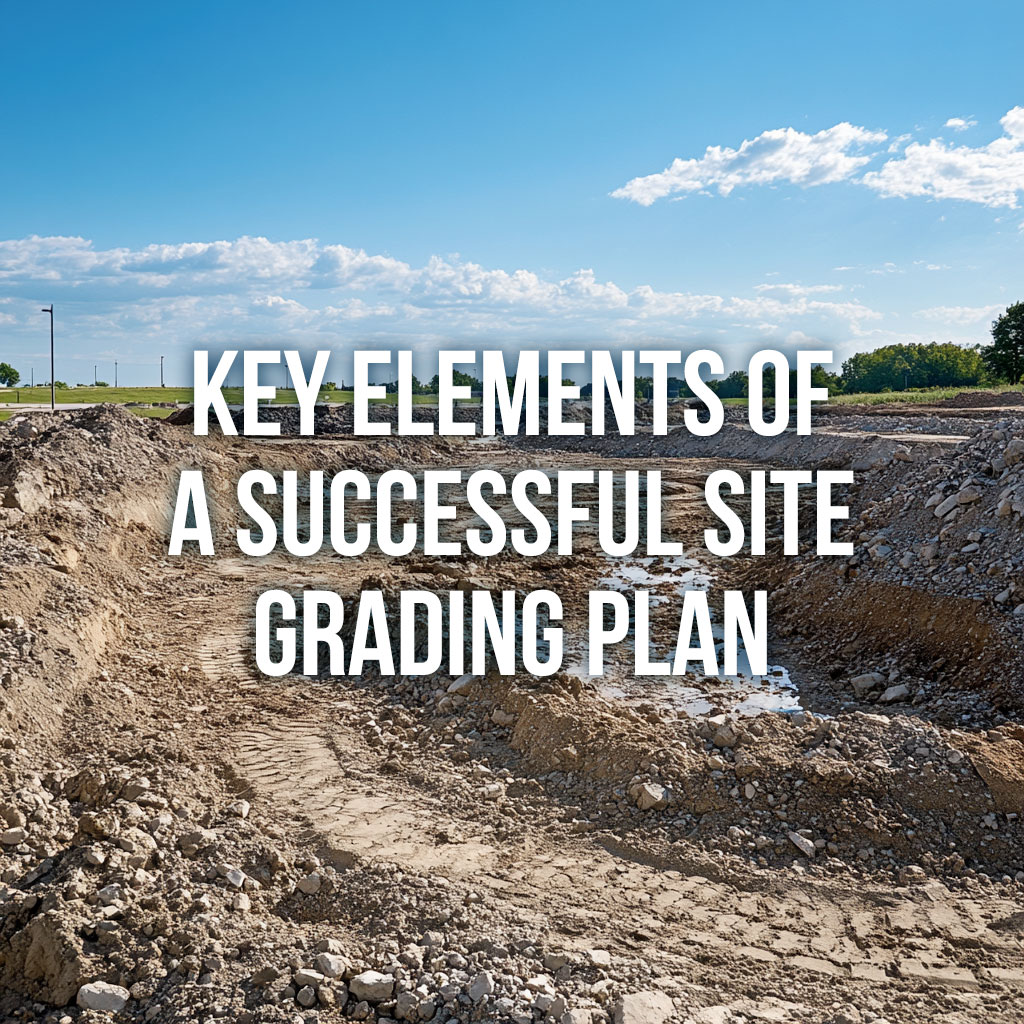


Have you ever considered why the purpose of a site grading plan is so important to construction work? A well-planned site grading strategy will ensure your project is constructed on a secure, stable base and complies with all regulations. In this article, we'll look at the most important aspects of a successful site grade plan and provide information to help you achieve an efficient development process.
A thorough soil analysis is the initial step to a successful site grading strategy. This requires taking a topographical survey and soil testing. The topographical survey gives precise maps of the current terrain which includes slopes, elevations, and natural characteristics. Soil testing can help determine the stability of the soil and drainage capacity. Knowing the soil and terrain conditions is essential for making educated decisions and avoiding any potential problems when building. A thorough soil analysis is the initial step to a successful site grading strategy. Learn more about our Earthwork and Grading Analysis services.
Design objectives play a crucial role in determining the overall plan for grading. These objectives should encompass the specific requirements of the project, such as foundations for construction, roadways, and landscaping. Additionally, compliance with regulations is an essential element of the design goals. Adhering to local, state, and federal regulations ensures that the project meets all legal requirements and avoids costly fines or delays.
The layout of the grading plan is an in-depth depiction of the proposed changes to the topography of the area. It contains contour lines showing the elevations and slopes to be achieved, as well as cut and fill calculations that calculate the amount of earth to be removed and drainage plans that manage the runoff from the surface. A precise calculation and the right drainage designs are crucial to avoid flooding, erosion and other issues that may compromise the integrity of the project.
Controlling erosion and sediment is important for retaining site stability and environmental health. For detailed strategies on erosion control, refer to Soil Erosion and Sediment Control. Methods for controlling erosion encompass silt fences, seeding, mulching, and retention ponds. These strategies help stop erosion of sediment in construction and protect the water bodies around them from being contaminated. Implementing efficient erosion control and sediment management methods is an essential element of an effective site grading strategy.
Safety must always be a paramount consideration in any construction venture. The Stability of slopes and the design of roads that are safe for access are vital components of a site's Grading Plan. Regular safety checks during the grading process can help you detect potential hazards and reduce the risk. If you focus on safety, you will be able to protect both the workers and the long-term viability of your project.
The reduction of environmental disturbances is an important component of a sustainable site grading program. Methods to accomplish this include conserving the natural habitats of our species and reducing soil disturbance, as well as implementing plans for restoration after construction. Being aware of the environmental impact not only complies with laws but also encourages sustainability and goodwill for the community. Explore the different types of land grading to understand how to minimize environmental impact.
A properly implemented site grading program includes a detailed construction plan, quality control measures and the ability to make adjustments in real-time. Regularly scheduled inspections and monitoring will ensure that the grading process is carried out in accordance with the plan and allow for prompt corrections. Effective implementation and monitoring help maintain project timelines and quality standards.
The obtaining of permits required and keeping complete documentation is crucial to the achievement of successful site planning for grading. Communication with the contractors and other stakeholders will ensure that all parties are on the same side and are able to resolve concerns quickly. A clear and concise documentation and communication system can help speed up the construction process and prevent confusion.
In summary, an effective site grading plan requires an extensive analysis of the site with clear design goals and a thorough grading plan layout, efficient erosion and sediment control security considerations, environmental impact strategies, careful monitoring and implementation, and extensive documents and communications. When you prioritize these elements, it will ensure stability and the success of the project.
For more information on site grading plans and to explore a range of expert solutions for your construction and development needs, visit Developers Research. Our team of professionals is dedicated to helping you achieve your project goals with precision and expertise. Contact us today to learn how we can support your next project.